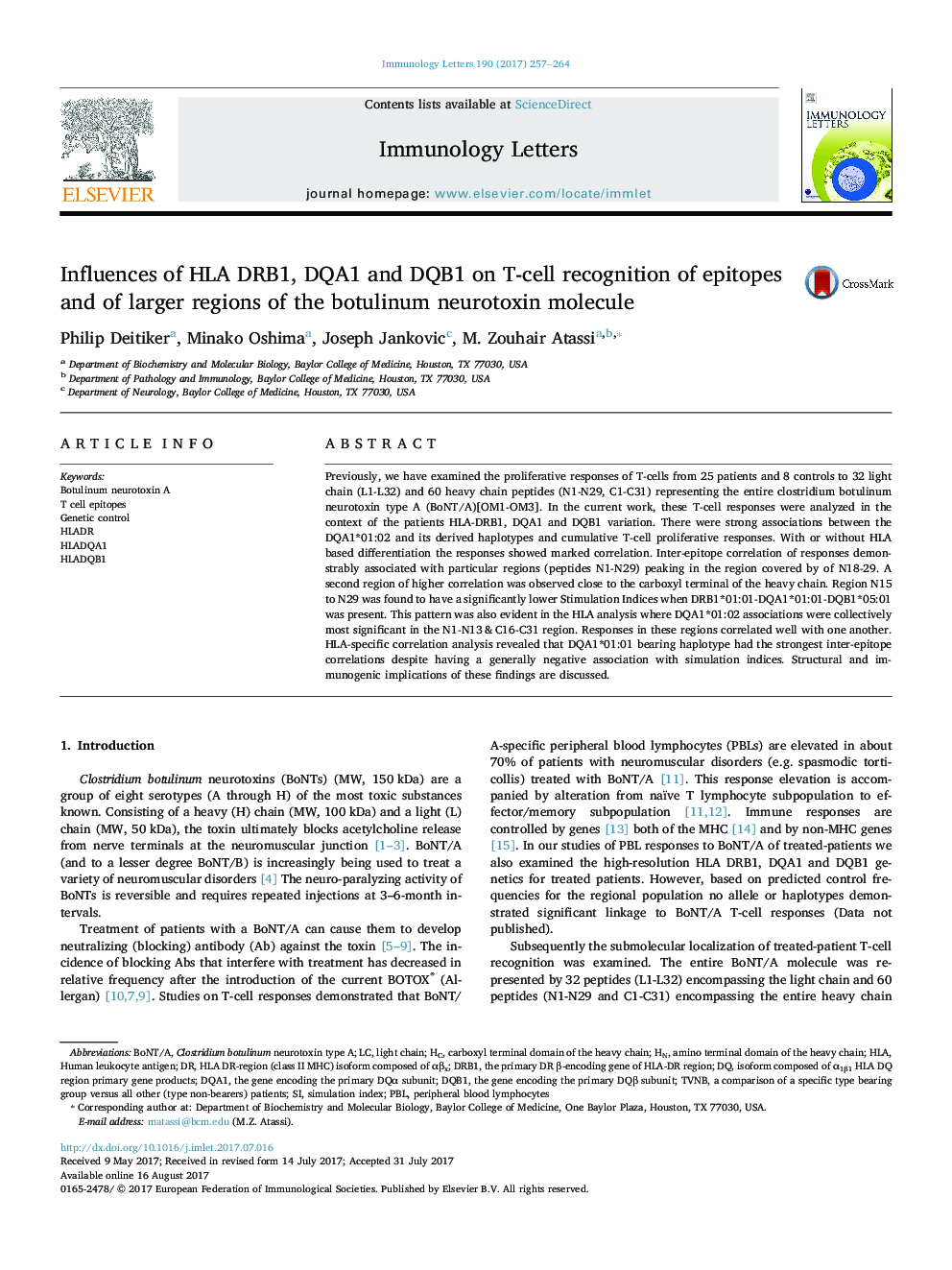| Article ID | Journal | Published Year | Pages | File Type |
|---|---|---|---|---|
| 5666582 | Immunology Letters | 2017 | 8 Pages |
â¢T cell responses of patients and controls to BoNT/A showed strong associations between cumulative responses and DQA1*01:02 and its haplotypes.â¢Inter-epitope region associated with N1-N29-N29) peaked in N18-29; and a higher correlation was close to the heavy chain carboxyl terminal.â¢Region N15 to N29 had significantly lower Stimulation Indices when DRB1*01:01-DQA1*01:01-DQB1*05:01 was present.â¢Similar pattern observed where DQA1*01:02 associations were collectively most significant in the N1-N13 and C16-C31 region.â¢DQA1*01:01 haplotype had the strongest inter-epitope correlations despite having a generally negative association with simulation indices.
Previously, we have examined the proliferative responses of T-cells from 25 patients and 8 controls to 32 light chain (L1-L32) and 60 heavy chain peptides (N1-N29, C1-C31) representing the entire clostridium botulinum neurotoxin type A (BoNT/A)[OM1-OM3]. In the current work, these T-cell responses were analyzed in the context of the patients HLA-DRB1, DQA1 and DQB1 variation. There were strong associations between the DQA1*01:02 and its derived haplotypes and cumulative T-cell proliferative responses. With or without HLA based differentiation the responses showed marked correlation. Inter-epitope correlation of responses demonstrably associated with particular regions (peptides N1-N29) peaking in the region covered by of N18-29. A second region of higher correlation was observed close to the carboxyl terminal of the heavy chain. Region N15 to N29 was found to have a significantly lower Stimulation Indices when DRB1*01:01-DQA1*01:01-DQB1*05:01 was present. This pattern was also evident in the HLA analysis where DQA1*01:02 associations were collectively most significant in the N1-N13 & C16-C31 region. Responses in these regions correlated well with one another. HLA-specific correlation analysis revealed that DQA1*01:01 bearing haplotype had the strongest inter-epitope correlations despite having a generally negative association with simulation indices. Structural and immunogenic implications of these findings are discussed.
